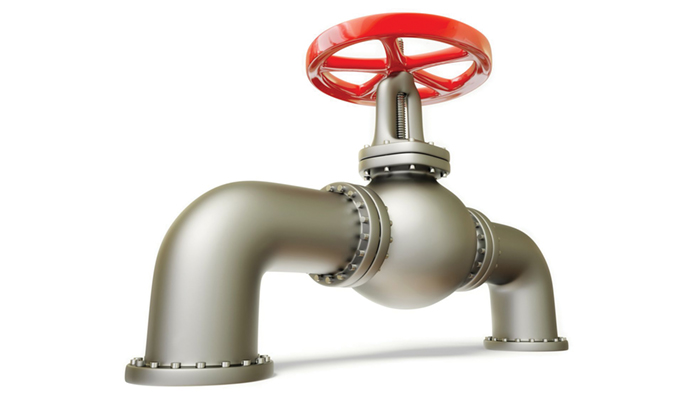All
Report: New England Doesn’t Need Gas Pipeline

A recent report prepared for several environmental and consumer groups concludes that New England does not need a new natural gas pipeline and that the proposed Access Northeast (ANE) pipeline would cost much more than expected.
Synapse Energy Economics Inc. prepared the report, entitled New England’s Shrinking Need for Natural Gas, for the Connecticut Fund for the Environment, Consumers for Sensible Energy, Mass Energy Consumers Alliance, Pipe Line Awareness Network for the Northeast Sierra Club Connecticut, and Sierra Club Massachusetts.
The following excerpts summarize the report’s major findings and conclusion.
With or without a pipeline, existing laws and regulations are expected to significantly decrease natural gas use for electric generation in New England. As a result of this decrease in natural gas use, the ANE pipeline is expected to produce net costs for ratepayers in Connecticut, Massachusetts, and throughout New England.
First, with or without a new pipeline, existing laws and regulations will cumulatively require New England’s use of natural gas for electric generation to decrease by 27 percent by 2023, relative to 2015 levels.
Natural gas use is forecasted to decline dramatically starting in 2023—just a few years after the ANE pipeline is supposed to be fully operational. Existing laws—renewable portfolio standards, energy efficiency resource standards, long-term requirements for additional hydropower and wind power, and carbon dioxide (CO2) emissions caps—require a significant reduction in natural gas-fired generation throughout New England. This decrease in overall gas use will reduce capacity constraints of existing pipelines and the need for new pipelines. By 2023, shortly after ANE’s construction, natural gas-fired generation is estimated to be 27 percent lower than in 2015. And by 2030, natural gas-fired electric generation is estimated to be 41 percent lower than in 2015.
Second, the ANE pipeline will cost New England consumers $6.6 billion, not $3.2 billion as previously reported.
Proponents of ANE have publicized an expected pipeline construction cost of $3.2 billion. However, according to expert witness testimony for Eversource, one of the main project proponents, after taking into account additional costs, including operations and maintenance, depreciation expenses, and return on equity, the ANE pipeline is expected to cost $0.5 billion per year for 20 years—about $6.6 billion in present value terms. The pipeline developers seek to charge these costs to electric ratepayers throughout New England.
Third, if the pipeline is built, New England ratepayers will pay additional costs of $277 million over its lifetime.
Even if the ANE pipeline reduces constraints and gas prices, it will cause overall price increases on consumers throughout New England, due to the cost of the pipeline itself. The pipeline is expected to impose net costs of $277 million for all New England electric ratepayers on a present-value basis.
Fourth, if the pipeline is built, electric ratepayers in Massachusetts and Connecticut will pay additional costs of $141 million and $85 million, respectively.
Massachusetts ratepayers will see cost increases associated with the ANE pipeline. Our analysis shows that Massachusetts electric ratepayers will pay additional costs of $141 million over the life of the pipeline.
Connecticut ratepayers will be looking at additional costs of $85 million over the lifetime of the pipeline. If the pipeline were built without the support of electric ratepayers in Massachusetts and New Hampshire, the costs to Connecticut ratepayers could be as high as $1.9 billion. The Connecticut Department of Energy & Environmental Protection has stated that this approach would burden the state’s ratepayers with disproportionate costs.
Fifth, implementing emission reduction mandates and targets under each New England state’s global warming solutions laws will cause economy-wide natural gas use to decrease by 20 percent by 2030, despite recent policies and trends that incentivize fuel-switching to natural gas.
In recent years, as the price of natural gas has dropped compared to other fuels, many New England consumers have switched their home and business heating systems to natural gas. At the same time, some states have prioritized natural gas fuel-switching, including Connecticut as a part of its Comprehensive Energy Strategy.
However, in order to attain greenhouse gas reductions in line with the scientific consensus on averting catastrophic climate change—and to comply with state laws intended to achieve this reduction—all of the New England states will have to go even further to reduce greenhouse gas emissions. Achieving the greenhouse gas emission reduction goals of the six-state region will require economy-wide CO2 emissions to decrease by 40 percent by 2030, relative to 1990 levels.
Conclusion
Our modeling shows that if the ANE pipeline is built as proposed, ratepayers will bear substantial net cost increases on their utility bills, even if the pipeline alleviates winter price spikes. Furthermore, within several years of the pipeline’s construction, the overall need for natural gas in New England’s electric sector is expected to decline dramatically as states work toward compliance with existing laws and regulations. The decline in natural gas use for electric generation indicates that even existing gas pipelines may operate under capacity and that ANE—or other new pipeline infrastructure—will not be needed to supply either electric generators or gas heating customers.
Under these circumstances, spending $6.6 billion on a new pipeline meant to provide natural gas year-round to electric power plants is not a reasonable or cost-effective way to address pipeline capacity constraints.
Related Posts
 Spotlight Sessions Illuminate Opportunities and Challenges
Spotlight Sessions Illuminate Opportunities and Challenges
Posted on September 19, 2025
 NEFI Testifies on RFS Changes Affecting the Heating Oil Industry
NEFI Testifies on RFS Changes Affecting the Heating Oil Industry
Posted on August 18, 2025
 From Retailer to Representative: Chris Keyser’s Road to the Vermont State House
From Retailer to Representative: Chris Keyser’s Road to the Vermont State House
Posted on June 16, 2025
 Northeast Working Group for Industry Principles Gets to Work
Northeast Working Group for Industry Principles Gets to Work
Posted on May 8, 2025
Enter your email to receive important news and article updates.
